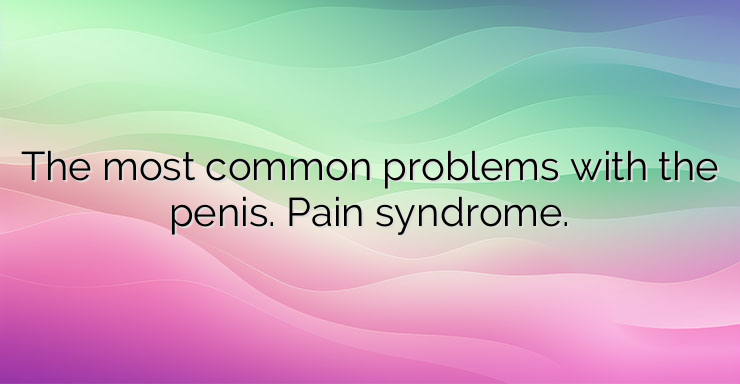Over the years, the number of men suffering from diseases of the male reproductive system has increased. According to experts, a contribution to this is the low health culture in terms of diseases affecting male dignity. Our advice is for young boys and older men, when they notice something disturbing, to seek medical advice to protect themselves from future complications. Penile pain syndrome is more of a diagnostic nox. It can be a complex of pathological conditions or an isolated symptom complex defining an independent disease. In short, the anatomy of the penis is perfect enough to predispose to disease – be it cutaneous (dermatovenereal) or purely functional and accessory diseases. The penis is a hollow organ that is made up of two cavernous bodies, located parallel to each other, and a third – callous body, which is located between them, protruding forward. At the top of the penis is formed a head – glans penis. It has an opening (ostium urethrae externae) through which urine and seminal fluid are evacuated during sexual intercourse. The penis is of the greatest importance for copulation (sexual intercourse). This process is possible thanks to his ability to enter an erection phase. During this period, the penis receives an active blood supply and blood retention in the corpora cavernosa. When ejaculation occurs, the blood is released back through the veins leading the blood away from the organ. During intercourse and a clean erection, there is a muscle at the base of the penis that is held in constant contraction, squeezing the veins of the penis and preventing blood from draining. On the head of the penis there is a skin that covers it – the foreskin. On its innermost surface there are glands that secrete a secretion and provide active “lubrication” between the foreskin and the head of the penis. It, in turn, is attached to the base of the penis with a leather bridle – the frenulum. In order to ensure the longevity of the generation and to prevent a collapse in male self-esteem and dignity, urologists put a lot of work and resources into controlling the pain syndrome, which can be very unpleasant for any adolescent male as well as any fertile adult. The symptoms of penile diseases are many and varied. What are the most common problems? NEWS_MORE_BOX 1. Painful penile fold during erection Most often this condition is associated with Peyronie’s disease. Pathoanatomically, the disease is expressed by a fibrous thickening of the skin fold at the base of the penis. It occurs most often in middle-aged men. It results from intradermal vascular injuries that cause fibrosis of the area. In many cases, treatment is not necessary and the patient undergoes conservative therapy. Most often, taking vitamin E with each meal is suggested, which is noted with significant progress in controlling the condition. In the absence of an effect in therapy, the patient undergoes surgical treatment. 2. Lack of sexual desire,due to a very painful erection The condition is known as priapism, characterized by an erection that is too long and painful. Sickle cell anemia is of pathogenetic importance for the development of the disease, which makes it difficult for blood to drain from the penis and prevents active metabolism and oxygen exchange in its tissues. It is mandatory to undergo a medical examination for the purpose of treatment. It has been shown that the pain syndrome can be controlled temporarily with paracetamol and applying cold compresses with ice on the body of the penis. If left untreated, however, the condition can lead to impotence! 3. Thin secretion from the penis and painful urination Most often, the clinical picture is caused by chlamydia – a disease-causing pathogen for the body. It is sexually transmitted, and it is appropriate to have two sexually related subjects examined and treated at the same time. To prove the infection, a local microbiological sample is taken from the penis and blood from the patient. Treatment is with antibiotics.


Leave a Reply